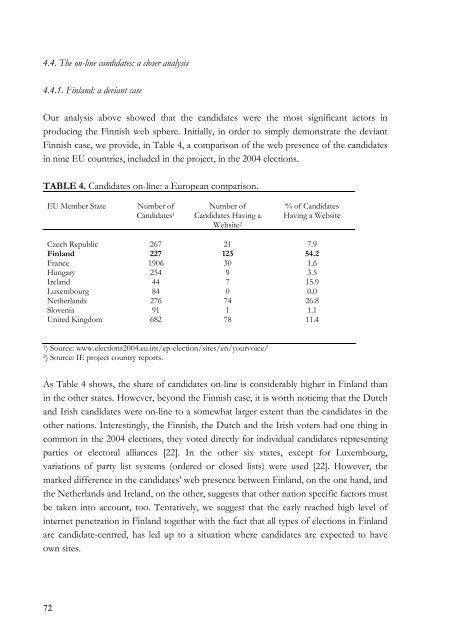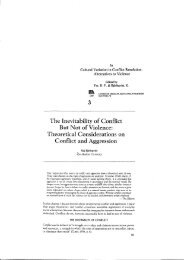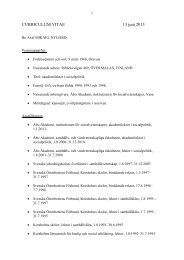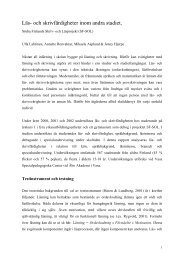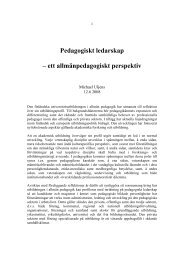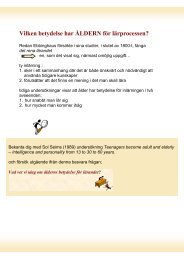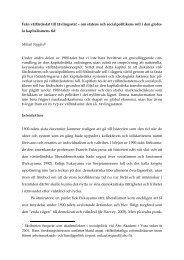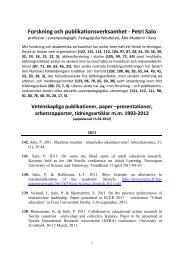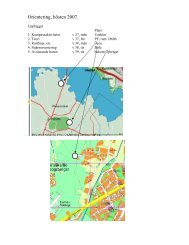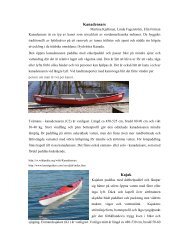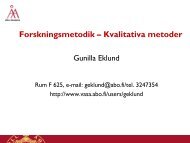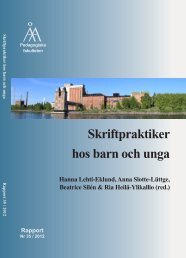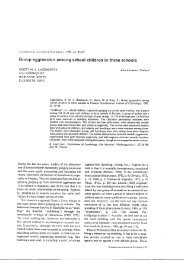Parties, Candidates and Citizens On-Line - Åbo Akademi
Parties, Candidates and Citizens On-Line - Åbo Akademi
Parties, Candidates and Citizens On-Line - Åbo Akademi
Create successful ePaper yourself
Turn your PDF publications into a flip-book with our unique Google optimized e-Paper software.
4.4. The on-line c<strong>and</strong>idates: a closer analysis<br />
4.4.1. Finl<strong>and</strong>: a deviant case<br />
Our analysis above showed that the c<strong>and</strong>idates were the most significant actors in<br />
producing the Finnish web sphere. Initially, in order to simply demonstrate the deviant<br />
Finnish case, we provide, in Table 4, a comparison of the web presence of the c<strong>and</strong>idates<br />
in nine EU countries, included in the project, in the 2004 elections.<br />
TABLE 4. <strong>C<strong>and</strong>idates</strong> on-line: a European comparison.<br />
EU Member State<br />
Number of<br />
<strong>C<strong>and</strong>idates</strong> 1<br />
Number of<br />
<strong>C<strong>and</strong>idates</strong> Having a<br />
Website 2<br />
% of <strong>C<strong>and</strong>idates</strong><br />
Having a Website<br />
Czech Republic 267 21 7.9<br />
Finl<strong>and</strong> 227 123 54.2<br />
France 1906 30 1.6<br />
Hungary 254 9 3.5<br />
Irel<strong>and</strong> 44 7 15.9<br />
Luxembourg 84 0 0.0<br />
Netherl<strong>and</strong>s 276 74 26.8<br />
Slovenia 91 1 1.1<br />
United Kingdom 682 78 11.4<br />
1) Source: www.elections2004.eu.int/ep-election/sites/en/yourvoice/<br />
2) Source: IE project country reports.<br />
As Table 4 shows, the share of c<strong>and</strong>idates on-line is considerably higher in Finl<strong>and</strong> than<br />
in the other states. However, beyond the Finnish case, it is worth noticing that the Dutch<br />
<strong>and</strong> Irish c<strong>and</strong>idates were on-line to a somewhat larger extent than the c<strong>and</strong>idates in the<br />
other nations. Interestingly, the Finnish, the Dutch <strong>and</strong> the Irish voters had one thing in<br />
common in the 2004 elections, they voted directly for individual c<strong>and</strong>idates representing<br />
parties or electoral alliances [22]. In the other six states, except for Luxembourg,<br />
variations of party list systems (ordered or closed lists) were used [22]. However, the<br />
marked difference in the c<strong>and</strong>idates’ web presence between Finl<strong>and</strong>, on the one h<strong>and</strong>, <strong>and</strong><br />
the Netherl<strong>and</strong>s <strong>and</strong> Irel<strong>and</strong>, on the other, suggests that other nation specific factors must<br />
be taken into account, too. Tentatively, we suggest that the early reached high level of<br />
internet penetration in Finl<strong>and</strong> together with the fact that all types of elections in Finl<strong>and</strong><br />
are c<strong>and</strong>idate-centred, has led up to a situation where c<strong>and</strong>idates are expected to have<br />
own sites.<br />
72


